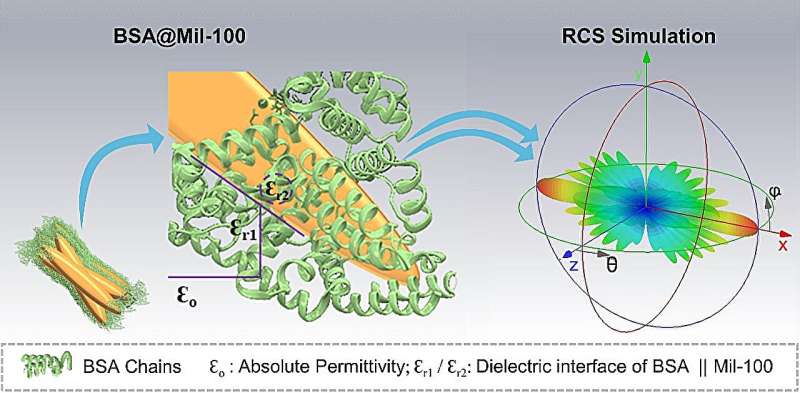This article has been reviewed according to Science X's editorial process and policies. Editors have highlighted the following attributes while ensuring the content's credibility:
fact-checked
peer-reviewed publication
trusted source
proofread
Novel framework promotes efficient electromagnetic wave absorption

A research team led by Prof. Wang Junfeng from the Hefei Institutes of Physical Science of the Chinese Academy of Sciences has developed a bio-inspired metal-organic framework (Bio-MOF) to achieve efficient absorption of electromagnetic waves.
The study was published in Small.
Metal organic frameworks (MOFs) are considered to be one of the excellent precursors for electromagnetic wave absorption materials. Typically, MOF-derived absorbing materials exhibit unique advantages in impedance matching and microwave loss due to their excellent conductivity, magnetism, sufficient defect sites and interfacial structure. However, to achieve efficient absorption of electromagnetic waves over a wide frequency range, multiple challenges need to be overcome while maintaining lightness and flexibility.
In this study, using biomineralized bovine serum albumin (BSA) protein as a template, the research team successfully controlled the crystal structure of Mil-100, a type of Fe-based MOF material.
This led to the development of a unique biological MOF material called BSA@Mil-100, which exhibited a hierarchical self-assembled structure ranging from the nano to micrometer scale and exhibited remarkable microwave absorption (MA) properties.
"Compared to conventional Mil-100, BSA@Mil-100 showed significant improvements in its ability to absorb microwaves," said Sajid ur Rehman, first author of the study.
The research results showed that at a super high frequency range of 8.85 GHz, BSA@Mil-100 achieved remarkably improved microwave absorption performance. It reached an absorption level of -58 dB and a broadband width of 6.79 GHz.
This approach represents a promising frontier in the design of high-performance microwave absorption materials, according to the team.
More information: Sajid ur Rehman et al, Hierarchical‐Bioinspired MOFs Enhanced Electromagnetic Wave Absorption, Small (2023). DOI: 10.1002/smll.202306466
Journal information: Small
Provided by Chinese Academy of Sciences





















